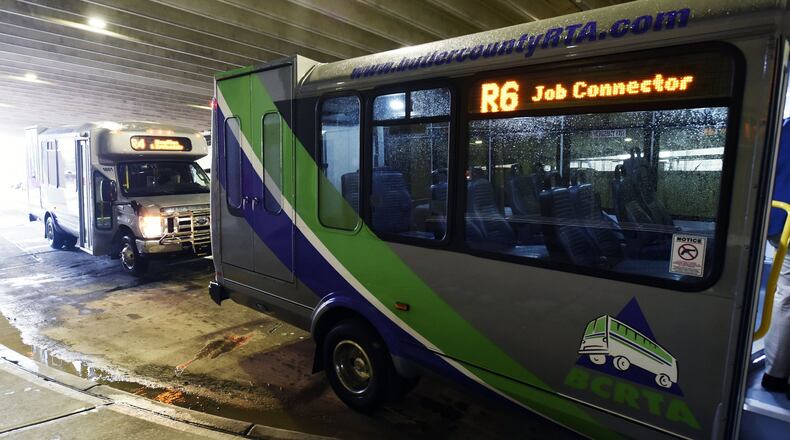RELATED: New shuttle route would take workers from Hamilton to Tri County Mall
“We looked into it with the HUD folks, and unless we’re expanding or adding new service, we weren’t allowed to seek additional funding,” Fehr said.
The $256,254 program has been partially subsidized by annual $25,000 contributions from the county and the Hamilton Community Foundation, and the city of Hamilton allotted $20,000 in CDBG funds last year. BCRTA asked Hamilton for $15,000 this year, and the city has $22,500 budgeted in the CDBG plan.
“If I can find more funding for this project that everybody seems to like, I can flex things to smaller stuff,” Dutkevicz said. “We had heard there might be some extra CDBG money, so we thought it might be an opportunity. You know you don’t get anything if you don’t ask for it.”
ThyssenKrupp Bilstein of America in Hamilton is one of the stops on the route. James Bax, a project analyst with the company, told the commissioners when they first considered the subsidy in 2016 that the bus line to their area was critical.
“You see a lot more unemployed job seekers, and we think one of the causes of that is transportation,” he said. “You don’t have a car, well, you’ve got to get a job. Well, how are you going to get a job when you don’t have car? We have a cycle of poverty that we want to work to improve. At ThyssenKrupp Bilstein, we need people.”
After operating successfully for three years, Dutkevicz said the route is poised to grow, and it hopes to add another bus. Now, a bus comes every two hours, and it would take about $300,000 to add a bus.
Even more crucial is adding more routes to expand the reach throughout the county, he said.
“One of the problems we’re dealing with right now we’re trying to be everywhere and what happens with the budget we have, transportation is just expensive, whether it’s your car or the bus, it costs a lot of money,” he said. “People are being supportive and we’re getting little chunks of money, but $25,000 only funds a couple hours every day, five days a week.”
When the project was first proposed, Fairfield and Hamilton were discussed as funding partners. Hamilton has provided funds, but Fairfield hasn’t since it gave $12,500 the first year. Commissioner T.C. Rogers said he thinks that city should be contributing since the route serves the residents there.
“They can do what they want,” he said. “I think they are receiving a benefit, in my opinion.”
Fairfield City Manager Mark Wendling said the city asked for ridership numbers but never received any, and it hasn’t been asked for any money recently.
MORE: Some Butler County agencies are worried about financing if the government shutdown continues
“Where are their metrics? That’s kind of what we wanted to seeWe’re willing to be a funder but we really do need some sort of metrics that they should have on their end, to be able to show how they are serving Fairfield residents,” Wendling told the Journal-News.
Dutekevicz said BCRTA has a $6 million annual budget, mainly subsidized with federal funds, and it doesn’t have the technology or manpower to provide that data.
As for other funding sources, since the community foundation generally funds start-up efforts for new projects, Dutkevicz said he did not ask them for funds this year, hoping there might be more CDBG money available.
“I wanted to leave the door open with the Hamilton Community Foundation to be a partner on another start-up in the future,” Dutkevicz said.
Fin-Pan Inc. in Hamilton was another company that implored the commissioners to fund the job connector. Over the past year Human Resources Manager Deborah Campbell said eight employees have ridden the bus to work. She said the service benefits both the company and its workers.
“I think it means more to the employees who are unable to provide transportation for themselves, where they can get out and get around and be able to work,” she said. “It’s benefited us as a company being able to hire people who are outside the boundaries of the city because they can shuttle in.”
About the Author
